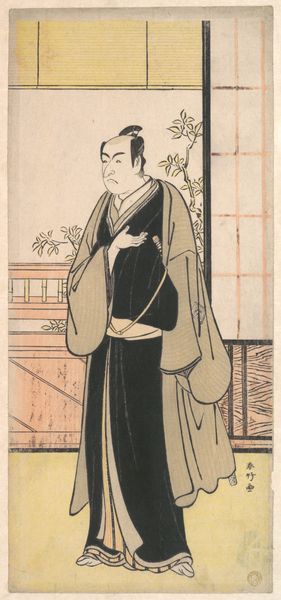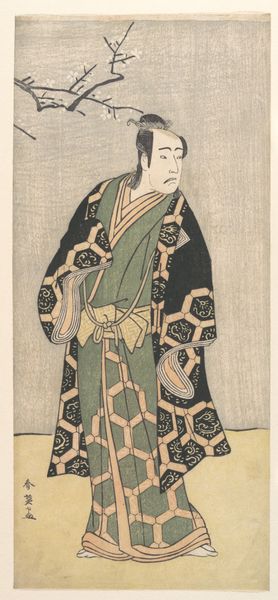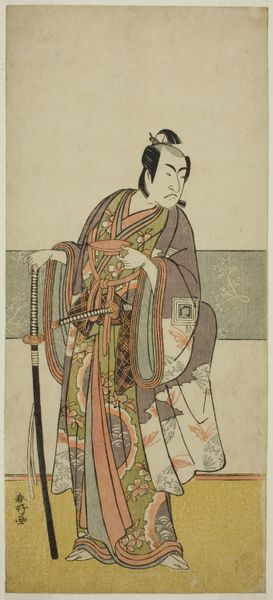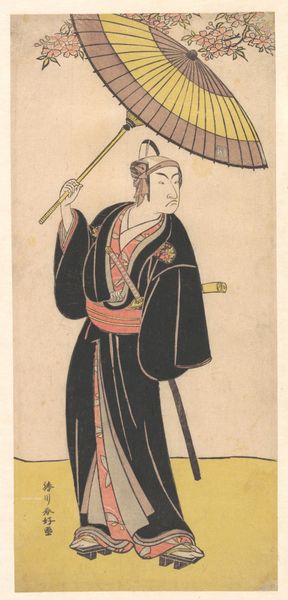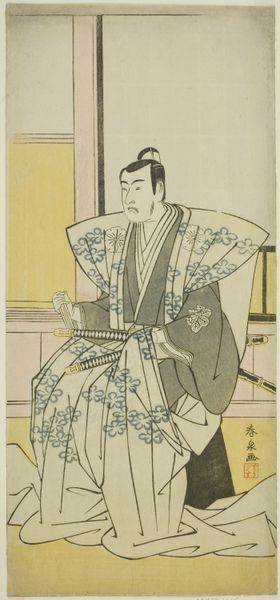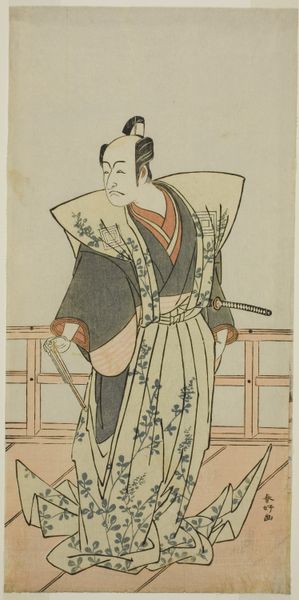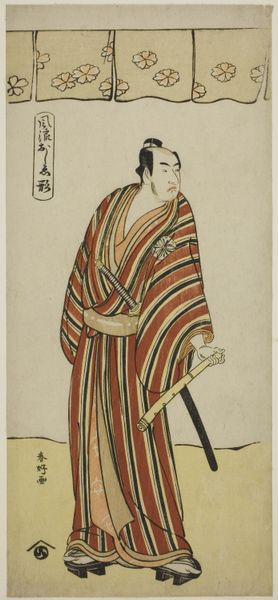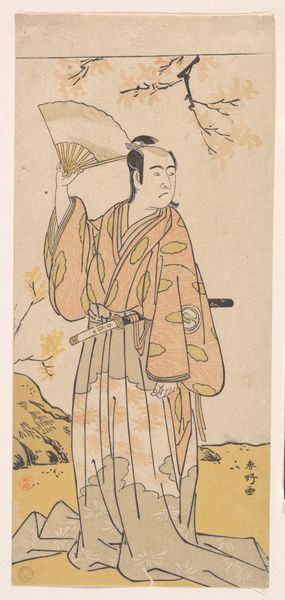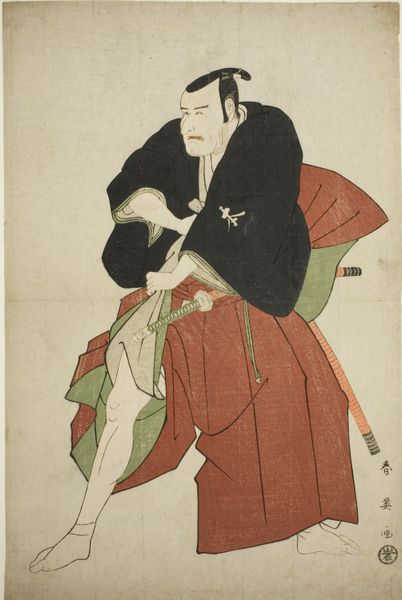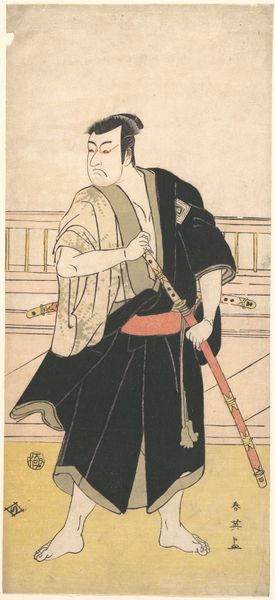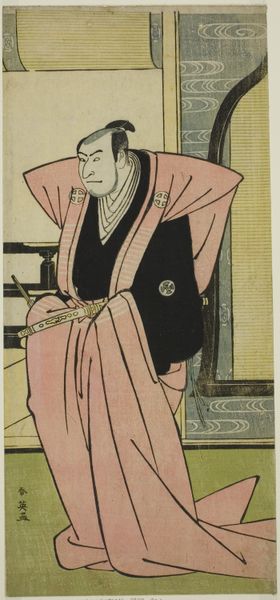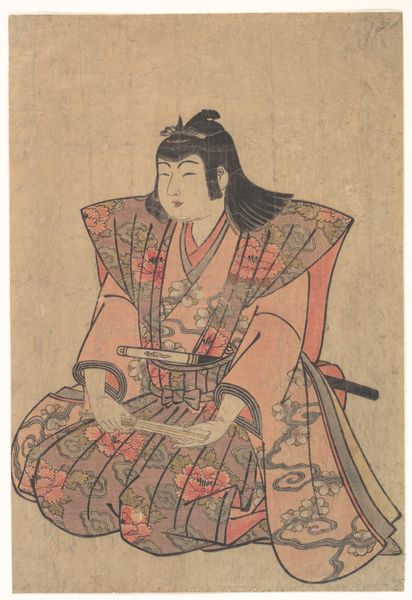
An Unidentified Actor in the Role of a Samurai 1700 - 1787
0:00
0:00
print, woodblock-print
#
portrait
# print
#
caricature
#
asian-art
#
caricature
#
ukiyo-e
#
figuration
#
woodblock-print
#
genre-painting
Dimensions: 12 1/8 x 5 1/2 in. (30.8 x 14 cm)
Copyright: Public Domain
Editor: This woodblock print by Katsukawa Shunshō, dating back to the late 18th century, depicts an actor as a samurai. There's a stillness in his pose and expression, and I’m struck by the contrast between the dark robe and the lighter shades of his kimono. How do you see this piece within its historical context? Curator: Well, consider that this is ukiyo-e, a "picture of the floating world," which was very much about capturing popular culture. Think about the status of actors then – often seen as outsiders, but immensely popular. Now, Shunjō wasn’t just making art, he was participating in shaping public perception. Editor: So, it's more than just a portrait? Curator: Absolutely! It’s about constructing an image. This actor is embodying the idea of the samurai, filtered through the lens of theatrical performance. The swords, the stern expression—these are symbols, carefully chosen for maximum impact on the audience. What does it tell us about the society's fascination with the samurai image? What were the values associated with them that the public desired or appreciated? Editor: It makes me think about the power of celebrity and how images are carefully constructed even then. It’s fascinating how a print could hold so much cultural information. Curator: Precisely. And the popularity of these prints allowed for wide dissemination, influencing tastes and even social values. Seeing art in this way shifts our perspective from aesthetic appreciation to understanding art's very real social function. I now see the role of imagery in reinforcing – or perhaps questioning – the samurai ideal. Editor: I never really thought about the politics of an image this way. It gives a totally new appreciation for this print. Curator: It’s like unlocking a secret code, isn't it? Hopefully the audience finds it interesting as well!
Comments
No comments
Be the first to comment and join the conversation on the ultimate creative platform.
